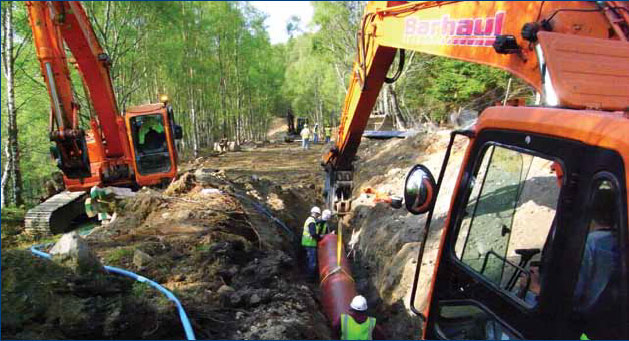Agri-renewables strategy for Scotland
This strategy shows how agri-renewables can contribute to the aim of building a cleaner, greener Scotland.
Chapter 2
Aims and Objectives
2.1 The overarching aim of the Agri-renewables Strategy is to support the uptake of renewable energy generation by agricultural businesses in Scotland. The Strategy sets out the successes we have achieved and the key actions we are progressing to address barriers which could constrain uptake of on-farm renewables.
2.2 The objectives of the Agri-renewables Strategy are:
1. to promote community involvement, community benefits and the
advantages of partnership working;
2. to ensure that the development of farm scale renewable
energy installations minimises the impact on Scotland's environment
and landscapes and respects residential amenity;
3. to raise awareness of the opportunities provided by the
full range of renewable technologies;
4. to strengthen links between renewable energy generation
and uptake of energy efficiency measures on farm; and
5. to demonstrate the range of advice, information and
support that is available to agri-businesses in considering their
energy needs.
Hydro Case Study: Innerhadden Estate
Farm: Innerhadden Estate is situated on the hills surrounding Kinloch Rannoch near Pitlochry, Perthshire. It is a managed family estate which covers some 5,500 acres of hill.
Project: A 'run of river' scheme where excess water from two rivers on the estate is siphoned off before being transported through 6.5 km of underground pipe to a buried power plant. The water falls 310 m to drive a turbine, with 1.4 MW of energy produced (enough to supply about 1,000 houses nearby) being fed into the national grid.
Costs: The installation cost in the region of £1.6 million; the scheme will pay off in 10 years and within this time will also fund additional estate investment.
Why install a hydro scheme? The estate was struggling to make an income from 850 sheep and 30 cows when, in 1985, a mixture of bad weather and entrepreneurial spirit led to diversification into smoked venison. Rannoch Smokery is still a successful business today but doesn't create enough income to run itself and the estate - which the family wish to maintain as traditionally as possible. A hydro scheme was considered to be the best and most environmentally friendly way to generate more income and safeguard the future of the estate.
With thanks to Richard Barclay, Rannoch Smokery.

Contact
There is a problem
Thanks for your feedback